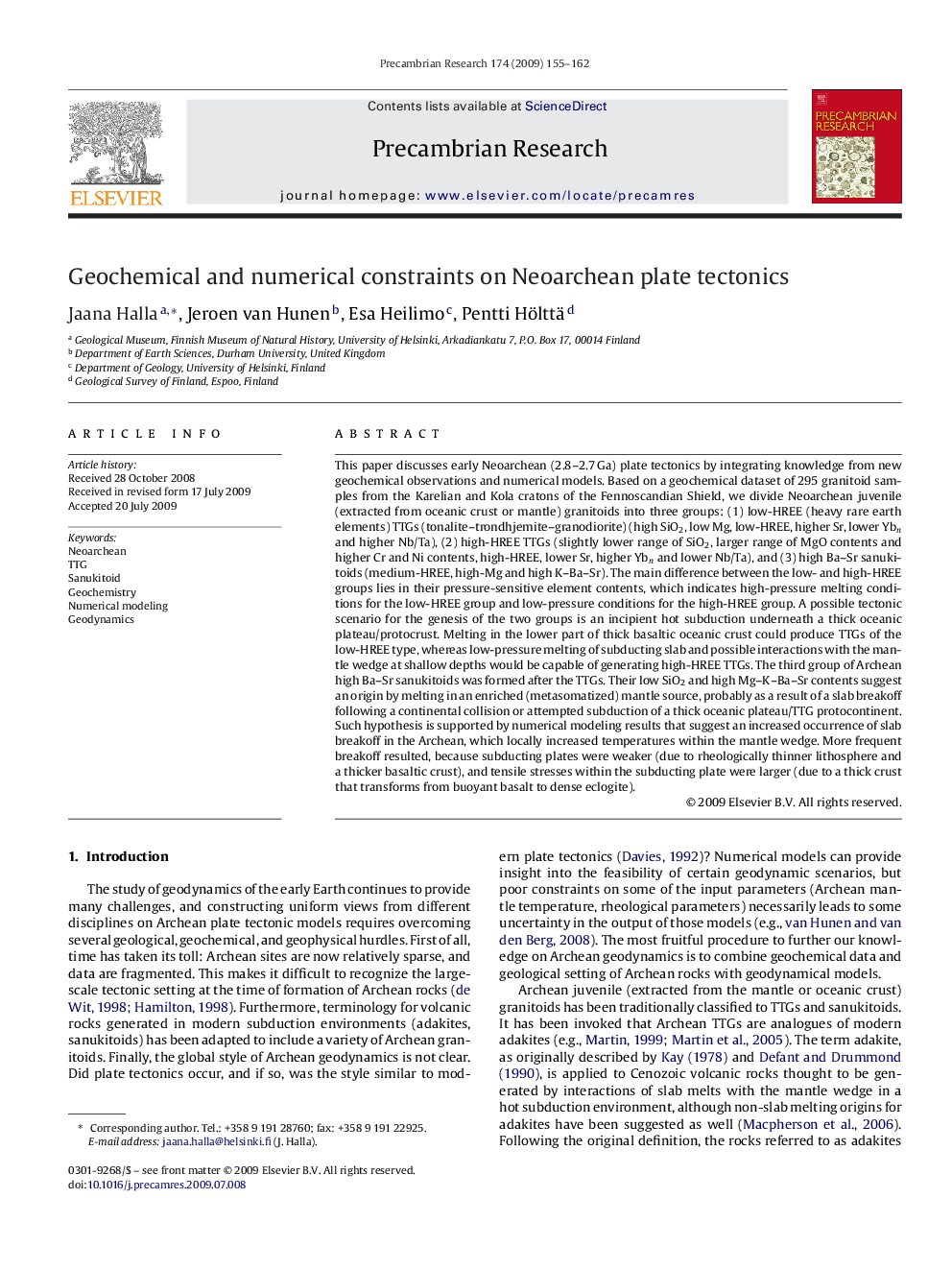| کد مقاله | کد نشریه | سال انتشار | مقاله انگلیسی | نسخه تمام متن |
|---|---|---|---|---|
| 4723954 | 1639686 | 2009 | 8 صفحه PDF | دانلود رایگان |

This paper discusses early Neoarchean (2.8–2.7 Ga) plate tectonics by integrating knowledge from new geochemical observations and numerical models. Based on a geochemical dataset of 295 granitoid samples from the Karelian and Kola cratons of the Fennoscandian Shield, we divide Neoarchean juvenile (extracted from oceanic crust or mantle) granitoids into three groups: (1) low-HREE (heavy rare earth elements) TTGs (tonalite–trondhjemite–granodiorite) (high SiO2, low Mg, low-HREE, higher Sr, lower Ybn and higher Nb/Ta), (2) high-HREE TTGs (slightly lower range of SiO2, larger range of MgO contents and higher Cr and Ni contents, high-HREE, lower Sr, higher Ybn and lower Nb/Ta), and (3) high Ba–Sr sanukitoids (medium-HREE, high-Mg and high K–Ba–Sr). The main difference between the low- and high-HREE groups lies in their pressure-sensitive element contents, which indicates high-pressure melting conditions for the low-HREE group and low-pressure conditions for the high-HREE group. A possible tectonic scenario for the genesis of the two groups is an incipient hot subduction underneath a thick oceanic plateau/protocrust. Melting in the lower part of thick basaltic oceanic crust could produce TTGs of the low-HREE type, whereas low-pressure melting of subducting slab and possible interactions with the mantle wedge at shallow depths would be capable of generating high-HREE TTGs. The third group of Archean high Ba–Sr sanukitoids was formed after the TTGs. Their low SiO2 and high Mg–K–Ba–Sr contents suggest an origin by melting in an enriched (metasomatized) mantle source, probably as a result of a slab breakoff following a continental collision or attempted subduction of a thick oceanic plateau/TTG protocontinent. Such hypothesis is supported by numerical modeling results that suggest an increased occurrence of slab breakoff in the Archean, which locally increased temperatures within the mantle wedge. More frequent breakoff resulted, because subducting plates were weaker (due to rheologically thinner lithosphere and a thicker basaltic crust), and tensile stresses within the subducting plate were larger (due to a thick crust that transforms from buoyant basalt to dense eclogite).
Journal: Precambrian Research - Volume 174, Issues 1–2, October 2009, Pages 155–162